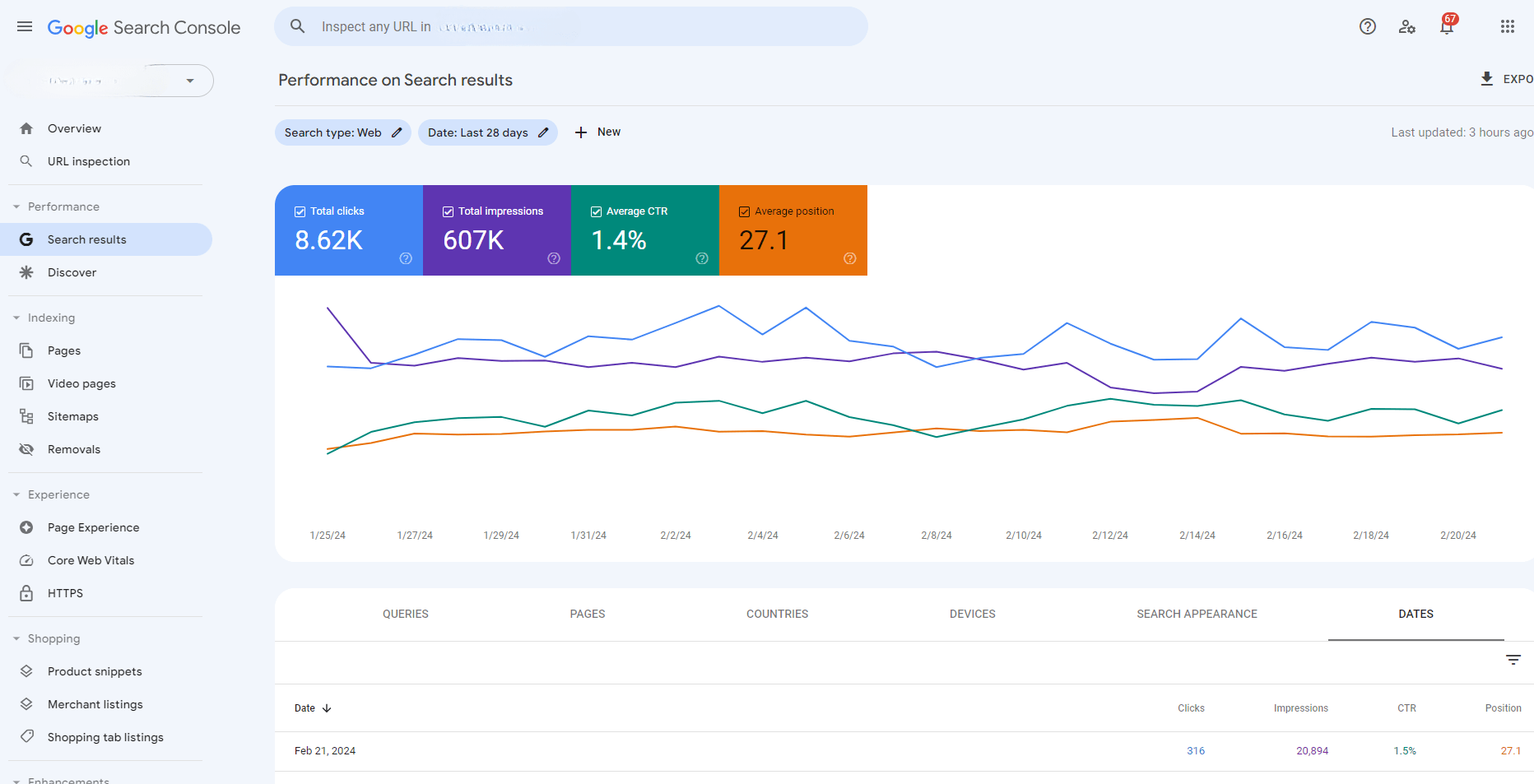In this blog post, we’ll compare Amazon Advertising vs Google SEO – two leading digital marketing platforms or services.
Unlike other reviews, our knowledge of both uniquely positions us to offer insights into their differences and benefits for various marketers. We’ll examine the difference between SEO services and ad campaigns, shedding light on how they operate within the ground of Amazon Advertising and Google SEO.
We’ll explore the unique features, main uses, and how each caters to different marketers’ needs – not to critique one over the other, but to provide valuable information so you can make an informed decision on which platform best suits your goals.
Amazon Ads and Google SEO are powerful in their own ways, with distinct advantages. Understanding the distinction of each can help you control their strengths to enhance your digital marketing and achieve greater success in reaching your audience and driving results.
Rather than pitting the two against each other, our aim is to enlighten how Amazon and Google can both help you meet marketing objectives, each in their own way. Let’s dive in!
Overview of Google Search Engine Optimization
Google SEO is the process of optimizing a website to improve its rankings in Google search results and Google Ads. Since Google dominates online search, ranking well can significantly boost a site’s traffic and success.
The goal is to make a website more relevant, authoritative, and user-friendly to Google’s algorithms that determine rankings. This involves technical optimization for website speed, mobile-friendliness, and site architecture. Content optimization for high-quality, and keyword-optimized content for users. And off-page optimization for building backlinks from reputable sites.
Google SEO is an ongoing process requiring continuous monitoring and adaptation as algorithms evolve. By increasing visibility and organic traffic, SEO is critical for digital marketing success.

Why is Google SEO Important for Your Business?
Google SEO is a transformative digital marketing tool. Our experience as experts shows how effective SEO strategies can change businesses and drive new online success.
Search engine optimization (SEO) offers valuable benefits for businesses aiming to build a strong online presence. SEO dramatically improves visibility by pushing websites higher in search engine rankings, including Google. This makes it more likely potential customers will find and engage with the brand. Additionally, SEO provides sustainable, cost-effective traffic by optimizing for relevant keywords and publishing high-quality content. This organic traffic continues over the long-term. SEO also enhances user experience by making websites more findable, accessible, and easy to navigate. Higher rankings and improved usability lead to greater engagement. Furthermore, strong SEO signals trust and authority since top-ranked brands are seen as more credible. From a marketing standpoint, SEO delivers strong return on investment without ongoing advertising costs. Robust SEO helps businesses outperform competitors in search results. An effective SEO strategy ensures brands maintain visibility and competitiveness in the dynamic online landscape.
SEO is a powerful way to dramatically boost visibility, traffic, and success online. Our company is committed to helping clients fully utilize SEO’s potential to maximize their growth and online presence. We aim to take advantage of SEO for sustainable, transformative success.
Maximizing Your Business Potential with Google SEO
Google SEO offers invaluable benefits for all types of businesses when used strategically. An effective SEO strategy delivers a multitude of benefits that can significantly impact your business growth and success. By optimizing your website content and structure to rank for targeted keywords, you can boost brand visibility when customers search for your products or services. High rankings for commercial keywords related to “buy” or “purchase” will drive more conversions by putting you in front of ready-to-buy searchers. Generating more leads becomes possible by targeting informative keywords that attract motivated visitors. Creating useful, relevant content improves customer experience by answering questions and providing value. Publishing optimized, engaging content consistently keeps your brand top of mind. Inactive customers can be reengaged through targeted content and offers. Selling more to existing customers is achievable through nurturing content and encouraging further purchases. Overall, optimizing pages for keywords your ideal customers use ensures your business appears in front of them. High rankings establish authority and credibility. As an organic strategy with continual traffic, SEO delivers strong ROI without ongoing advertising costs. Optimizing for users also enhances engagement and conversions. Maintaining strong SEO ensures you stay ahead of competitors and maintain search visibility.
SEO draws targeted, valuable website traffic to grow your customer base and sales. When controlled strategically, it provides a critical competitive edge for today’s digital marketplace. SEO is essential for businesses of all sizes looking to succeed online.
How Do We Approach SEO for Our Clients?
Our SEO agency develops custom strategies tailored to each client’s unique business goals and target audience. Rather than a one-size-fits-all approach, we conduct thorough research into your market, competitors, and objectives to create a personalized optimization plan that delivers real results. Our custom SEO leverages industry best practices, innovative techniques, and cutting-edge auditing tools to unlock your website’s full potential on Google search results.
Proven SEO strategies:
- Keyword Research: We carefully identify and analyze the specific terms and phrases their target audience uses to search for relevant products or services. By gaining a clear understanding of these keywords, we can then strategically optimize and incorporate them into our client’s website content. This helps increase their site’s visibility in search engine results pages. Our comprehensive keyword research enables us to match website content with the search queries potential customers are actually using. With this personalized approach, we boost the odds of our client’s website ranking higher and getting found by their ideal buyers. The keyword analysis we conduct lays the foundation for an effective SEO strategy that connects our clients with more qualified visitors and drives growth for their business.
- On-page Optimization: We focus on aligning key elements with your target keywords for SEO. This includes optimizing titles, meta descriptions, headings, and content on each page. By tailoring these components to match your selected keywords, we ensure search engines can easily crawl and index your pages. This on-page optimization improves your chances of ranking higher in search results. With a strategic focus on your top keywords, we can optimize your site architecture, content, and code to help search bots better understand each page’s topic and relevance. Implementing this on-page optimization service will enable your website to show up earlier in search engine results for your most important queries. The higher visibility can drive more qualified traffic to your site and grow your business.
- Content Creation: Our expert content creation team develops informative, engaging, and relevant content tailored to your audience’s needs and preferences From SEO blog posts and articles to website copy and multimedia content, we create compelling content that not only attracts visitors but also encourages them to engage with your brand and take desired actions.
- Technical SEO: We optimize the technical aspects of your website, it improves your site’s overall performance and visibility in search results. Technical SEO includes optimizing the speed of your site so it loads faster for users. It also involves ensuring your site is responsive on mobile devices with a seamless experience. Improving your underlying site architecture and code structure also enhances technical SEO. Additionally, implementing structured data markup through schemas helps search engines better understand your content. Other technical optimizations we may perform include optimizing image file sizes, fixing broken links, enhancing website security, reducing redirect chains, and improving code efficiency. With these technical SEO optimizations, your website will provide a smoother, faster experience for visitors. This will lead to improved user engagement metrics. Search engines will also be better able to crawl, index, and understand your site content. The enhanced technical performance combined with search discoverability improvements will help your website rank higher in search engine results pages. This leads to more qualified traffic that converts into customers for your business.
- Link Building: When we build links for your website, we focus on acquiring high-quality backlinks from reputable sites in your industry or niche. The links come from authoritative, trusted sources that are relevant to your business. By securing these strategic SEO backlinks, we can build a robust and diverse backlink profile for your website. This strengthens your domain authority and credibility in the eyes of search engines like Google. Ultimately, constructing this network of quality backlinks will help boost your website’s rankings in search engine results pages for your target keywords. The higher you rank, the more visible your business becomes to prospective customers searching for your products or services online. Our link building efforts aim to connect your site with influencers, publishers, and resources that your audience already knows and trusts. The links signal to search engines that your business is an authoritative industry player. This in turn improves your search engine visibility and sends more qualified organic traffic to your website. The targeted backlinks we build maximize your chances of outranking competitors and gaining new customers.
- User Experience Enhancements: When optimizing your website, we make user experience (UX) a top priority to create a seamless, enjoyable journey for your visitors. This includes streamlining and improving your website navigation so people can easily find what they need. We will speed up your page load times so users don’t get frustrated waiting for pages to display. Ensuring your site is mobile-responsive with a consistent SEO experience across devices is also key. We will implement user-friendly design elements like clear CTAs and working forms to enable seamless engagement. Overall, our UX optimizations aim to remove friction and make interacting with your site as easy as possible for visitors. This leads to higher engagement metrics, longer time on site, and more conversions. Our UX enhancements transform your website into a high-performing asset that effectively converts visitors into customers. With a stellar user experience, your website becomes a revenue-driving workhorse rather than just an online brochure. You’ll attract and engage more of the right people while delivering an accessible, on-brand experience that promotes your products or services. Our UX optimizations will maximize your website’s impact and value for your business.
- Website Audits and Competitive Analysis: We conduct comprehensive website audits and competitive analysis for your business, it provides insightful data to identify areas for improvement and opportunities for growth. We perform in-depth evaluations of your website’s overall performance, technical health, and optimization status. This allows us to pinpoint any issues negatively impacting your site and find ways to enhance it. We also analyze your competitors’ websites to compare their strategies and identify their strengths and weaknesses. By assessing your site and the competitive landscape, we can develop data-driven strategies tailored to your business. These customized strategies help optimize your online presence based on real insights instead of assumptions. Our analysis guides strategic decisions to address website pain points, capitalize on growth opportunities, and outrank competitors in search results. The audits produce actionable next steps to boost organic traffic, conversions, and revenue. Our goal is to provide you with the accurate, up-to-date information you need to make smart choices for your website. With regular audits and competitive analysis, we can evaluate progress and adjust strategies over time. This ensures your website continually improves and adapts to drive performance. Our insights help set your business up for current and future SEO success.
Our custom approach adapts over time based on real-time data to align with your evolving goals and deliver maximum ROI. With expertise navigating Google’s algorithms and a proven record of driving tangible, tailored outcomes for each client, our experienced team is dedicated to helping you rank higher and drive valuable targeted traffic.
SEO is essential for growth by connecting with your ideal audience. When you partner with us, you get more than just a cookie-cutter solution. You get a strategy customized for your unique business needs to unlock your online growth potential.
Understanding Amazon Advertising
Amazon Advertising empowers businesses to promote products and engage millions of potential customers worldwide. As a leading online marketplace, Amazon offers tailored advertising solutions to meet diverse seller and brand needs.
A key advantage is the ability to target shoppers during all stages of the buyer’s journey – from initial research to final purchase. Precise options based on demographics, searches, browsing history, and past purchases allow ads to be delivered to the most relevant audiences.
Advertisers can choose from various ad formats on Amazon. Sponsored Products ads appear in search results and product pages, while Sponsored Brands showcase logos, headlines, and multiple products. Sponsored Display targets shoppers both on and off Amazon. Amazon DSP enables programmatic ad buying across Amazon properties, exchanges, and external sites. And Amazon SEO enables organic optimization on the marketplace.
Robust analytics provide real-time campaign data on impressions, clicks, conversions, and return on investment. This empowers advertisers to optimize for maximum performance.
Overall, Amazon Advertising’s targeting capabilities, ad formats, and analytics offer an effective platform to engage shoppers, promote brands, and drive sales.

Benefits of Amazon Advertising and Its Importance
Amazon Advertising plays a pivotal role in enabling businesses to achieve various objectives, including reaching customers, enhancing brand recognition, and driving sales. Its significance is underscored by several key factors:
- Access to a large and engaged audience: With over 300 million global active customer accounts, Amazon provides advertisers with an extensive pool of potential buyers.
- Tailored targeting options: Leveraging advanced algorithms and behavioral insights, Amazon delivers highly relevant ads to customers, thereby increasing engagement and conversion rates.
- Cost-effective advertising: Amazon Advertising offers flexible budget management and competitive pricing, making it accessible and suitable for businesses of all sizes.
- Multi-format advertising: With diverse ad formats like Sponsored Products, Sponsored Brands, Display Ads, Video Ads, and Audio Ads, Amazon caters to a wide range of marketing needs, allowing businesses to choose the most suitable format for their campaigns.
- Measurement and optimization: Amazon Advertising provides real-time insights and analytics, enabling businesses to track and continuously improve their campaigns for optimal performance.
- Enhanced brand recognition: Through showcasing brand stories and educating audiences about value propositions, Amazon Advertising contributes to increased brand awareness and loyalty.
- Cross-platform advertising: Amazon ads can appear not only on Amazon properties but also on third-party websites, expanding reach beyond the Amazon ecosystem and maximizing exposure.
- Mobile-first approach: Amazon Advertising prioritizes mobile advertising, recognizing the growing trend of mobile commerce and ensuring businesses can capitalize on this lucrative market segment.
Amazon Advertising empowers businesses to cost-effectively connect with interested customers, drive sales, and establish a robust platform presence. The combination of audience reach, actionable insights, and flexible advertising options makes Amazon Advertising an invaluable asset for businesses looking to succeed in the digital marketplace.
Successful in Amazon Advertising
Amazon Advertising provides a valuable opportunity for businesses to boost their ecommerce success. Case studies across industries demonstrate how Sponsored Products, Sponsored Brands, Sponsored Display ads, and Amazon’s optimization tools help drive sales growth and brand awareness. For example, an electronics brand used Sponsored Products to increase visibility of new product launches. With Amazon’s analytics, they improved performance over time, driving a 30% monthly sales increase. Similarly, fashion retailers leveraged Sponsored Brands ads to engage shoppers interested in clothing, lifting sales 40%. Meanwhile a supplements provider used Sponsored Display ads to differentiate from competitors, gaining 50% more customers. With Amazon’s targeting capabilities and product interest insights, businesses can penetrate relevant niches. As these examples illustrate, Amazon Advertising helps various vendors, ranging from electronics to fashion and health products, sell more online while establishing their brand presence. Given the platform’s strong results across verticals, adoption of Amazon Advertising is becoming imperative for ecommerce success.
Target Audience and Reach for Amazon and Google
Google’s audience has more diverse intent and seeks to research, explore solutions or just browse. Conversion intent varies more. Google reaches a broader audience, but not all are ready to buy.
Amazon’s audience is mostly shoppers ready to buy. They search for products with intent to purchase or research. Amazon is great for targeting buyers nearer the end of the sales funnel.
Google reach goes beyond products to all kinds of searches. Businesses can attract users at different funnel stages, from awareness to consideration.
For reach, Amazon Ads put products in front of people searching on Amazon. Visibility is very targeted to potential buyers there.
Google SEO has a wider reach to build awareness, even if not all will convert immediately and Amazon Advertising targets buyers ready to purchase. Businesses should choose based on their specific goals.
Cost and ROI
Google SEO costs come from optimization efforts – content creation, backlinks, technical improvements. So the initial investment can be high. But over time, higher rankings bring essentially free traffic. This sustainable traffic can give great ROI long-term.
Amazon Ads are mostly pay-per-click, so advertisers pay only when their ad is clicked. This can lead to good ROI as ads target buyers ready to purchase. But costs vary based on competition, keywords, etc.
Google SEO builds brand visibility and authority over time, which indirectly boosts sales.
While Amazon Ads offer direct sales metrics and potential for quick returns.
Amazon Ads can provide faster ROI through targeted ads. But Google SEO delivers long-term gains through sustainable organic traffic and credibility. A balance of both is ideal for overall marketing ROI.
The main points are that Amazon Ads offer the advantage of delivering faster returns on investment and providing measurable direct sales metrics, while Google SEO presents the potential for greater long-term benefits due to its ability to establish authority and leverage organic reach. Balancing both short-term gains and long-term growth is essential for maximizing overall marketing return on investment (ROI), both are equally effective. Therefore, optimizing strategies to cater to both immediate and sustained objectives is pivotal in achieving holistic marketing success.
Businesses Compared Factors for Decision-making
When developing a digital marketing strategy, ecommerce brands should carefully weigh the benefits of Amazon Ads versus Google SEO. Factors like product type, typical buying behavior, marketing goals, and budget play a major role. For products sold primarily on Amazon, Sponsored Ads can quickly drive visibility and direct sales. However, for products requiring more consumer education before purchase, SEO builds organic visibility and credibility over the long-term. Budget is also a consideration, as Ads offer flexible spending while SEO demands an ongoing investment to maintain rankings. Case studies show that electronics relying on Amazon sales have found success through Ads, while B2B services have leveraged SEO to attract clients. Ultimately, integrating both platforms may provide the most comprehensive approach – using Amazon Ads for immediate sales opportunities while simultaneously using content and SEO to foster brand-building. Carefully assessing business goals, target audience behavior, and resource allocation helps determine the right balance of Ads and SEO.
Conclusion
Understanding the differences between Amazon Ads and Google SEO is key for e-commerce success today.
This comparison showed their unique strengths: Amazon Ads target ready buyers through precise ads driving immediate sales. Google SEO builds long-term brand visibility and organic reach.
We looked at ad types, optimization strategies, and factors in deciding between them based on business goals, audience and offerings.
Real-world examples demonstrated ROI potential – Amazon for quick sales boosts and Google for establishing authority over time.
The insights help businesses make informed choices between these vital tools. An integrated strategy using both Amazon’s direct sales and Google’s extensive reach can provide a synergistic boost.
As online competition increases, mastering Amazon Ads and SEO becomes essential, not just advantageous. The knowledge shared here provides a guidepost for thriving digitally.
Leverage the distinct benefits of both Amazon Advertising and Google SEO when compared. This can help elevate your e-commerce strategy and drive success in the digital marketplace.
Optimize Your SEO Strategy Now
Want to boost your search engine rankings on Google? Our team of SEO experts can help. We’ll develop a custom plan tailored to your business goals. Don’t wait – contact us today to get started! Speak with a strategist by reaching out online. We can’t wait to connect and take your SEO to the next level!





